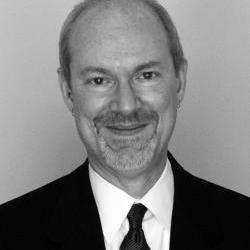Operas in staged or semi-staged productions have become an annual Spring event for The Cleveland Orchestra and its music director Franz Welser-Möst. Last year’s imaginative Cunning Little Vixen was a triumph; previous seasons have included works by Mozart and Richard Strauss. This season’s installment was Richard Strauss’s rarely performed Daphne, in a semi-staged production directed by James Darrah.
Strauss and his librettist Joseph Gregor fashioned an ambiguous interpretation of the Greek myth of the young woman Daphne, who spurns the amorous advances of both her childhood friend Leukippos and the God Apollo because of her love of nature. Leukippos challenges Apollo; Daphne fails to intervene to save her friend's life. In response to her remorse, Apollo asks the gods to transform Daphne into a laurel tree.
The Cleveland Orchestra production was unquestionably a musical success. The leading vocal roles are extraordinarily demanding, requiring heroic vocalism and great stamina. There was not a weak link in any of the Cleveland principals.
Soprano Regina Hangler was ideal in the title role. Hangler has the very unusual combination of a youthful, unaffected lyrical sound, but also with a full, steely edge to ride over the opera’s dense orchestration at climactic points. Her coloratura was clear and precise in her opening scene. As the drama develops, her singing became more passionate and thrilling. In the closing scene in which Daphne is transformed, the soprano was high above the back of the stage in Severance Hall’s organ chamber. Her singing of the final wordless passages was haunting. Hangler carried herself with a dignified, poised stage presence. This performance marked the Cleveland debut of a brilliant young soprano whose career should be watched.
Tenor Andreas Schager was equally commanding in the vocally cruel role of Apollo, both heroic and unceasingly high. He poured streams of sound over the orchestra in full voice, seemingly with endless reserves, yet with the ability to mold meaningful musical phrases. As the flirtatious Leukippos, tenor Norbert Ernst also had a dramatic, but more Italianate, sound, appropriate to his young mortal character. As Daphne’s father Peneios, Ain Anger brought a sonorous bass as he commands the preparations for the annual Dionysian festival, with its wine drinking that proves to be Daphne’s downfall. Although billed as a mezzo-soprano, Nancy Maultsby was a true earth-mother contralto as Daphne’s mother Gaea. Maultsby’s rich voice had the ability to reach the low E below middle C that the role requires.
A large number of smaller roles were equally well cast. The men of the Cleveland Orchestra Chorus sang with firm and lyrical sound, but were unimaginatively deployed in clumps along the rear of the stage. A non-singing dancer, Bryna Pascoe, involved herself in the action, although in no single role. At the end of the opera, she represented in stylized movements Daphne’s transformation into a tree.
Pride of place goes to Franz Welser-Möst and The Cleveland Orchestra in Daphne’s difficult technical challenges, very thickly orchestrated, with complex textures and virtuoso writing throughout. The string sections are often divided into multiple parts, including solo obbligatos above the rest. The unaccompanied oboe theme that opens the work, and which continues to appear throughout the opera, was beautifully played by principal Frank Rosenwein. It set the tone for the rest of the orchestral work. They made it all sound easy, although it clearly was not. Concertmaster William Preucil and principal flute Joshua Smith both had prominent solos during the course of the evening. As in the past, Franz Welser-Möst proved to be at his most inspired in an opera he loves; Daphne can be marked as one of his finest musical achievements in Cleveland.
Sadly, the visual production, directed by James Darrah, with décor, lighting and projections by Cameron Jaye Mock and costumes by Emily Anne MacDonald and Peabody Southwell, did not match the musical achievements. The orchestra was on the stage; behind them were several stepped platforms on which most of the action took place. The platforms and a promenade in front of the orchestra were covered with bright green artificial turf. The artificial grass also climbed the back wall of the stage, as if it were a growth invading the organ. A large translucent hemisphere was suspended above the stage, lit variously to represent times of day: bright for mid-day, with other settings for sunset, moonlight and sunrise. Abstract projections were shown against the stage walls. The costumes, mostly off-white, were of no particular historical period or distinction. Apollo was dressed as if he were a white-clad Siegfried. The chorus wore in black tuxedos with black shirts. The stage direction did not add much to the understanding of the plot. But the musical performance was of such high quality, that the lackluster stage production really didn’t matter.


